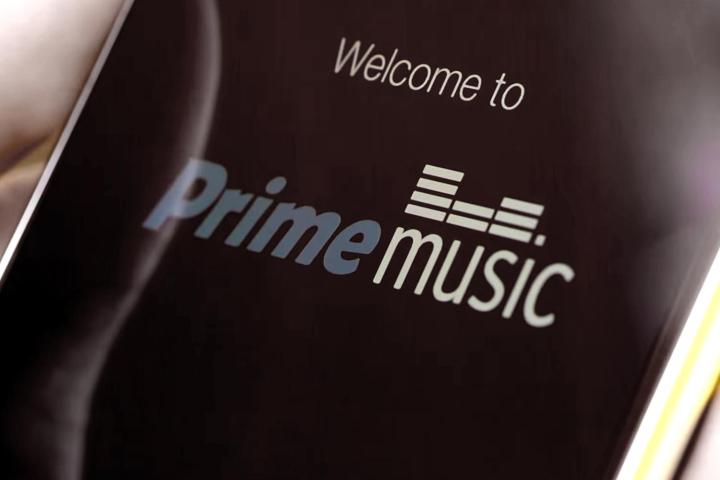
Movie streaming services like Netflix have shifted the way we think of the film and television studio system. And given time, services like Spotify will either save or drive the final nail in the record label coffin. But is that why Amazon’s jumping in?
Given all that is at stake in the very crowded race to dominate music streaming, it’s no surprise that others have taken a measured approach. Rumors have swirled for years around Apple’s planned streaming offering, a product that’s always seemed an inevitability given the central role music has played in the company’s recent success — notably in 2003, when the iTunes Store made apparent to labels that it was actually possible to turn a profit on digital music in a post-Napster world.
In the meantime, the company has a number of baby steps toward streaming, buying the Lala service and launching properties like iTunes Match, a cloud-based service that lets users upload and stream their existing music collection for an annual fee, and iTunes Radio, a streaming offering that’s most easily compared to internet radio offerings like Pandora. And the multi-billion dollar purchase of Beats takes Apple one step closer to the subscription-based music streaming service it clearly wants.
I won’t drop my Spotify subscription any time soon, but I’ve got a new Plan B.
After all, music streaming is hard. Take a look at Spotify, a giant force in the music subscription biz. The company is growing its user base at a rapid clip. At last count (from some time in May), CEO Daniel Ek reveal that the service had cracked the 10 million paid subscriber milestone (with 3 million of those in the U.S. alone). That’s an additional 6 million subscribers added over the same time last year. An impressive feat, no doubt, but how does that actually translate into honest to goodness earnings?
We all know that artists are, to use to Wall Street’s terminology, getting boned at around $0.007 per stream (so, around 71,000 or so streams should be enough to get to an low-end Fender Telecaster — before tax, of course), but surely that means that Spotify itself has more money than god, right? After all, we’re talking more than a billion dollars in subscriptions, plus ad-revenue for non-paid subscribers. Yet all signs still point to the company losing tens of millions of dollars a year.
And then there’s Amazon, who, a week ahead of a major product launch, went ahead and pushed out a music streaming site. Amazon’s streaming offering has been rumored for nearly as long as an Apple product, but the company launched it with all the fanfare of buying a new pair of jeans. It’s easy to see why Amazon might have been inclined to downplay such an offering. For one thing, there’s the selection. It’s just not there yet. Not even close. The company clearly didn’t make all of the music publishing deals necessary to launch a robust offering.
As such, playing down the launch was perhaps in the company’s best interest, so as to avoid the sort of hyperbolic “Spotify-killer” proclamations from the media that would have invariable led to a lot of disappointed users. Instead, like the company’s movie streaming service — which also launched with a fairly abysmal selection — Amazon smartly opted not make its music service a standalone. Instead, it’s Amazon Prime Music, yet another in a long list of perks you get for signing up for Amazon Prime.
I’m a satisfied Prime user, and I know I’m not alone. I signed up for the service shortly after its launch in 2005 for the promise of free shipping and haven’t looked back — not even when the company upped the price by $20 a year. And a quick mental tally of shipping costs accrued over the course of a year still puts me in the black. All the while, the company has added perks to the package. And really, who could complain about Amazon Instant Video’s anemic selection at launch when we weren’t really paying for the thing?

It’s another in a long line of perks designed to cement Amazon as your everything store. Part of that, naturally, means pulling you into the company’s growing hardware offerings. And as such, it’s certainly no coincidence that the news dropped just ahead of new offerings on that end. For Amazon, the hardware has always been secondary.
From the first Kindle on, the company’s products have always been shiny content delivery devices, and the launch of Prime Music is yet another way for Amazon to deliver you that content on Kindle Fire tablets and whatever else the company might launch, all within its walled ecosystem. And hey, anything Prime Music doesn’t have for streaming can probably be acquired through the Amazon Music store — for an added fee.
At launch, Prime Music is far from great. But for Amazon, that’s good enough. The less money the company spends on deals with labels, the less chance it has of getting bogged down in the money-losing world of streaming music (although if anyone can afford it, it’s Amazon).
Should Apple or someone else come along and prove that music streaming can be a truly profitable model, don’t be too surprised if Amazon changes its tune.


